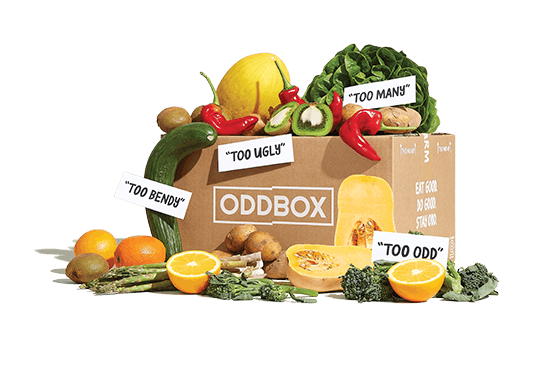How To Store, Prep And Cook Kale
This superfood has been trending for years…but do you know how to cook it?
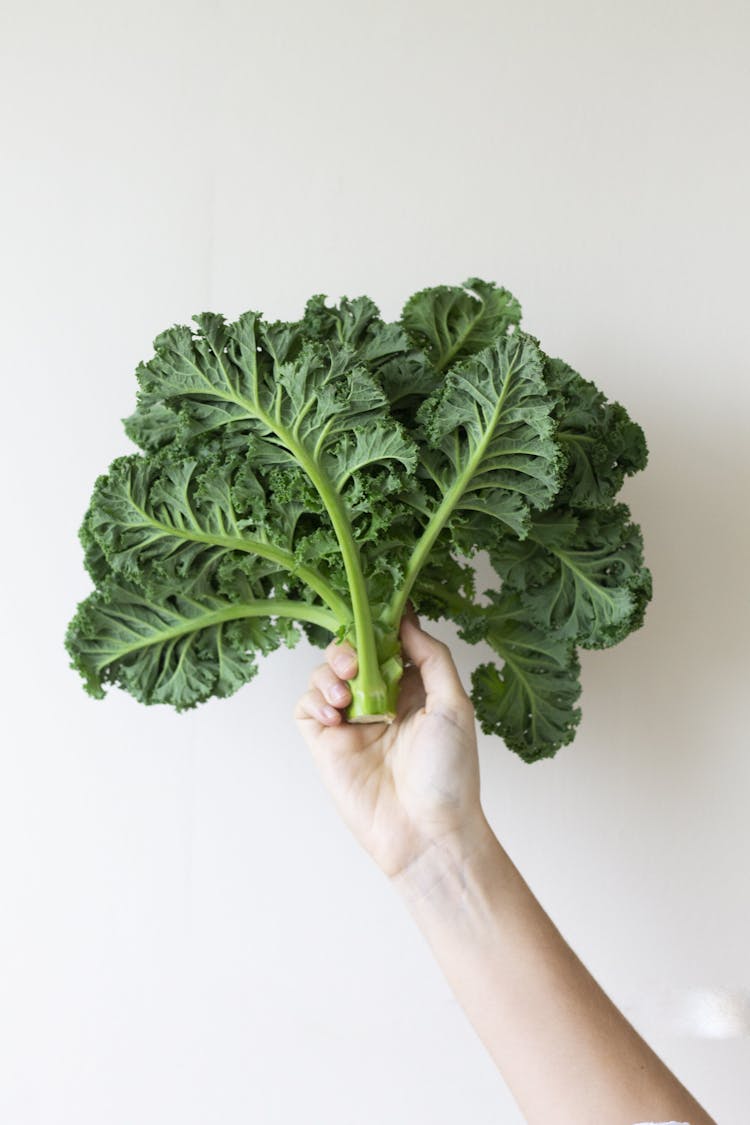
What Is Kale?
Kale is like the rockstar of veggies! It's a super healthy leafy green that's part of the broccoli and cabbage family. There are different types of kale, each with its own unique features. Curly kale is the classic one with bumpy leaves and hearty taste. Lacinato kale, also known as "dinosaur" kale, has dark, wrinkled leaves that taste a bit sweeter. Red Russian kale has strong purple veins on flat leaves and a not-so-strong flavour. And then there’s Siberian kale which is tender, mild and awesome for salads. So, whether you're into classic, trendy, mild, or colourful, kale's got you covered!
Benefits Of Kale
Kale packs a nutritional punch that makes it a standout among vegetables. Bursting with vitamins like A, C, and K, it supports immune function, skin health and bone strength. Its high fibre content aids digestion and can promote a feeling of fullness. Kale is also rich in antioxidants, including beta-carotene and flavonoids, which combat oxidative stress and inflammation, potentially lowering the risk of chronic diseases. Additionally, kale provides a good dose of minerals like calcium and iron, essential for maintaining strong bones and preventing anaemia.
Can You Eat Kale Raw?
Absolutely, you can enjoy kale raw! In fact, raw kale is a fantastic addition to salads and smoothies. While its texture can be a bit sturdy, there's a trick to make it more tender and palatable. Before using raw kale, give the leaves a good wash and remove the tough stems. Then, either massage the leaves with a touch of olive oil and a pinch of salt or let them marinate briefly in a lemon juice or vinegar-based dressing. This technique helps break down some of the fibres, making the kale softer and more enjoyable to eat.
How To Store Kale
Storing kale to keep it fresh and vibrant is easy. First, remove any rubber bands or ties and give the leaves a gentle rinse. Pat them dry or use a salad spinner to remove excess moisture. If you're not using the kale immediately, wrap it in a slightly damp paper towel or cloth, then place it in a loosely sealed reusable bag. Alternatively, you can store the leaves in an airtight container lined with a paper towel. Keep the container in the refrigerator's crisper drawer. Just remember, the longer you store kale, the more its flavour can intensify. So, enjoy it within a week for the best taste and nutritional value.
How To Cook Kale
Cooking kale is a breeze and it’s easy to bring out its delicious flavours. Start by washing the kale leaves thoroughly and removing the tough stems. You can tear the leaves into bite-sized pieces for easy cooking or chop into thin slices. You can cook kale using a variety of methods and can even add it to soups and stir-fries for an extra boost of nutrients. Keep scrolling to see a collection of kale recipes that you can try.
Kale Salad
Start by making your dressing, which is a blended mixture of 1/2 cup chopped roasted carrots, ⅓ cup of water, a dash of olive oil, 2 tbsp rice vinegar, 2 tsp minced ginger and a pinch of salt. Next, roast 1 tin of chickpeas for 10-15 minutes at 200c. Thinly slice one bunch of kale (you can use whichever kale you would like) and place in a bowl with a drizzle of lemon juice, a dash of oil and a pinch of salt. Use your hands to massage until the kale becomes soft and wilted. Now you can add in any other veggies that you would like:
- Carrot
- Beetroot
- Radish
- Avocado
- Cucumber
Finish by topping with your delicious dressing and the roasted chickpeas.
(Recipe via Love And Lemons)
Crispy Kale Crisps
Kale crisps make the perfect addition to any dish, adding another layer of texture and flavour easily. To make kale crisps, simply remove the tough stalk and roughly chop 100g of kale. Preheat your oven to 150c/130c fan/gas mark 2. Drizzle oil over your leaves and massage in. You can sprinkle on whatever seasoning you would like, our personal favourite is ras el hanout, or chinese 5 spice! Spread out in a single layer and bake for 18-22 minutes. Leave to cool for a few minutes and either enjoy by themselves or use as a topper to your favourite dish.
(Recipe via BBC Good Food)
Kale Soup
Start by sauteing 2 garlic cloves, 1 onion and 2 potatoes that have been peeled and cubed. Cook for roughly 5 minutes until everything has softened. Next pour in 750ml of vegetable stock and leave to simmer for 10 minutes. Now you can add in 250ml of milk (this can be swapped out for any dairy free alternative) and 2 large handfuls of kale. Leave to cook for another 3 minutes, or until the kale has wilted. Season generously with salt and pepper and then either use a blender to puree the soup. Either enjoy on its own, or serve with a drizzle of cream and a sprinkling of your favourite seeds.
(Recipe via Veggie Dessets)
Kale Pesto
Add 1/2 cup of pumpkin seeds and 1 garlic clove to a food processor until everything is well combined and ground up. Then add 1/4 cup of parmesan cheese (or 1 tbsp of nutritional yeast) and a generous amount of salt and pepper. Pulse again. Next add in roughly 2 cups of kale, 2 tbsp lemon juice and a drizzle of olive oil. Process until the mixture is fully combined. Serve over pasta, on homemade pizza, as a salad dressing or even as a garnish for a soup!
Top tip: If your kale pesto is too bitter, try adding 1/4 tsp of honey, maple syrup or your preferred sweetener.
(Recipe via Love And Lemons)
More Kale Recipes
Crunch down on these delicious kale recipes!
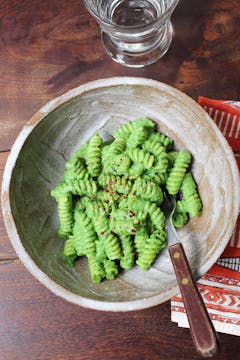
Super Green Kale Pasta
Super creamy, packed with nutrients and quick!
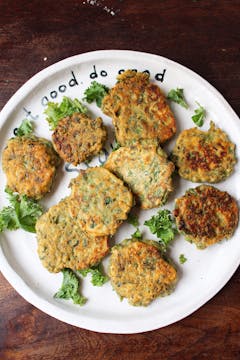
Kale and Chickpea Flour Fritters
These little fritters are made from shredded kale, dill, garlic powder, chickpea flour and seasonings. The batter is made in minutes, and the fritters pan fried until golden brown.
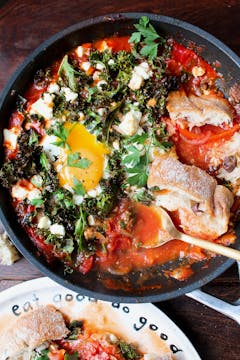
Kale Shakshuka
This comforting winter dish can be served for breakfast, lunch or dinner. The kale is cooked in chopped tomatoes and served with (or without) poached eggs, feta cheese (or vegan feta) and served alongside crusty bread.

